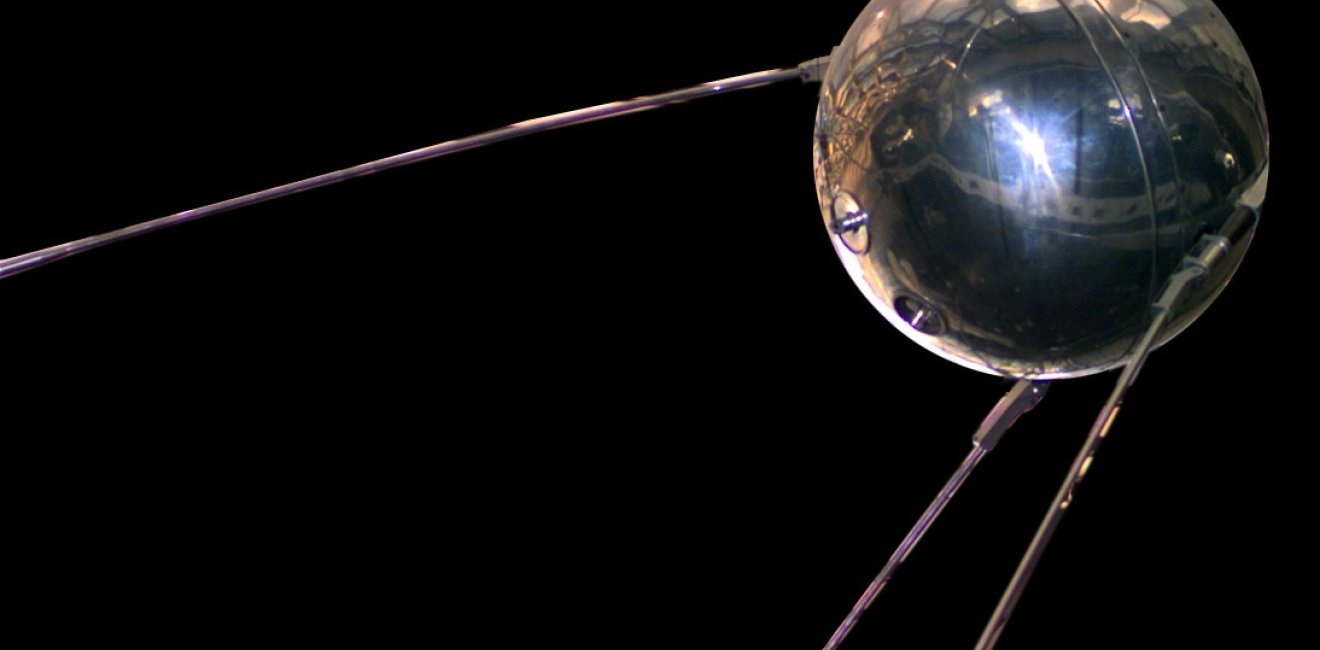New Sources on Sputnik
Documents added to DigitalArchive.org provide a look at the origins of Sputnik, the first Soviet satellite.

A blog of the History and Public Policy Program
Documents added to DigitalArchive.org provide a look at the origins of Sputnik, the first Soviet satellite.

Nine documents, all declassified from Russian archives and recently translated into English for publication on DigitalArchive.org, provide a brief and skeletal look at the origins of Sputnik, the first Soviet satellite.[1]
Document No. 1 and Document No. 2 were jointly sent to Dmitrii Ustinov, the Minister of the Defense Industry on May 26, 1954. Document No. 1 is a rather lengthy and strikingly ambitious report, the first of its kind in the Soviet Union, articulating the design and mission of an artificial satellite of the Earth. The report’s principal author was Mikhail Tikhonravov, a scientist employed by the Scientific-Research Institute No. 4 (NII-4) who had a long involvement in the Soviet rocket program. To ensure a strict secrecy, throughout the report, TIkhonravov used the euphemism “article R” to refer to the R-7 ICBM that he envisioned launching the satellite. While enumerating all the different scientific benefits of artificial Earth satellites, he also notes in the conclusion that such objects will also have “military significance.” Most strikingly, Tikhonravov makes it very clear that creating an initial satellite (which he calls the “the simplest satellite”) is just the first step to creating a human-carrying satellite, and then future “satellite-stations” (what we would today call “orbital stations”), and finally, flights to the surface of the Moon.
Document No. 2 is the short cover letter attached to Document No. 1 and written by Sergei Korolev, a Chief Designer at the Scientific-Research Institute No. 88 (NII-88). In his letter, he directly asks the government for permission to begin “exploratory work on a satellite.”
Document No. 3 is a letter from Vasilii Riabikov, the chair of the so-called “Special Committee” (in charge of the development of all strategic missiles) and Chief Designer Sergei Korolev, to Nikita Khrushchev and Nikolai Bulganin asking for formal approval to initiate a satellite project. The letter, dated August 5, 1955, was clearly a response to the announcement on July 29, 1955 by the Eisenhower Administration that the United States would launch a scientific satellite during the International Geophysical Year in 1957-58. In the letter, Riabikov and Korolev mention projects by Wernher von Braun and repeatedly invoke the threat of American success in the field. They point out that soon, the R-7 ICBM would be capable of putting a satellite, weighing somewhere between 1,500 to 2,000 kg, into orbit and suggest that the cost would be on the order of 250 million rubles.
Document No. 4 is one of the most important documents in the history of the first Soviet satellite: the Presidium decision, dated August 8, 1955, committing the Soviet Union to a satellite project. This was in direct response to the letter included here as Document No. 3.[2]
Document No. 5 is the formal Council of Ministers decree from January 30, 1956, detailing the plan of action for the Soviet satellite project. The original conception of the satellite, which would carry an extensive suite of scientific instruments, was called “Object D.” The idea was to launch Object D in 1957 at the beginning of the International Geophysical Year. The primary responsibility for building Object D was assigned to the design team under Chief Designer Sergei Korolev (who at the time was a Chief Designer at the Scientific-Research Institute No. 88 or NII-88) while coordination of the scientific instrumentation was assigned to a new commission of the Academy of Sciences under Academician Mstislav Keldysh.
Document No. 6 is a letter from a prominent Soviet scientist, Academician Ivan Bardin, who was chair of the Soviet committee participating in the International Geophysical Year. Bardin, writing directly to Nikita Khrushchev, was essentially complaining that his hands were hobbled because of secrecy strictures; despite repeated inquiries from Western scientists, Soviet representatives could neither confirm nor deny whether the Soviet Union had committed to launching a satellite during IGY. As a result of this letter, the Soviet Party and government somewhat loosened secrecy rules and Soviet representatives abroad were allowed to admit and publish in very general terms on the existence of a satellite project.[3]
Document No. 7 is a letter from Chief Designer Sergei Korolev to industrial leaders (probably Special Committee chair Vasilii Riabikov) requesting permission to launch a small satellite, known as the Simple Satellite (PS), before the beginning of the International Geophysical Year (IGY). Due to inordinate delays in the development of the Object D, the originally planned Soviet satellite, Korolev (and Tikhonravov) suggested a quick-and-dirty option to launch a satellite quickly before an American one. Note the erroneous identification of a U.S. Army rocket launch from September 1956 as an attempted (and failed) American satellite launch.[4] The letter, dated January 5, 1957 was circulated among industrial officials and led to a more detailed entreaty to Party leaders and the government, as seen in Document No. 8.
Document No. 8 is the Presidium (or Politburo, as it was later renamed) decree approving the more modest Simple Satellite (PS) project to quickly launch a satellite into orbit. The idea was to prepare two of these satellites, PS-1 and PS-2, for launch sometime in the early summer of 1957. One of the notable aspects of this decree is that the Academy of Sciences was asked to establish a network of tracking stations involving both professionals and amateurs to track the trajectory of the first satellite as it circled overhead.[5] In addition, the Academy was given permission to publicize the frequency at which the first satellite would broadcast from space.
Document No. 9 is the final report of the industrial managers (Vasilii Riabikov and Konstantin Rudnev), scientist (Mstislav Keldysh), military leader (Anatolii Semenov), and designer (Sergei Korolev) in charge of the PS-1 launch to Nikita Khrushchev. Dated September 24, 1957, it details all the plans for the launch, including the expected orbit, technical details of the satellite, and the means to track the satellite (which would include the use of amateurs across the Soviet landmass), as well as a draft of the TASS announcement to be made upon its launch and a second announcement about its trajectory across the globe.
Document No. 10 and Document No. 11 are the final Party and government decrees approving the launch of Sputnik. Both are dated September 26, 1957, with the former being issued by the Presidium (or the Politburo, as it was later called) and the latter by the USSR Council of Ministers.
[1] For a detailed look at the origins of Sputnik, see Asif Siddiqi, The Red Rockets’ Glare: Spaceflight and the Soviet Imagination, 1857-1957 (New York: Cambridge University Press, 2010), Chapter 8.
[2] For a detailed exposition of this chain of events in 1955 leading to this letter and the final Politburo decision on the matter, see Siddiqi, The Red Rockets’ Glare, 313-329.
[3] For an excellent collection of translations of articles from the Soviet media from the 1950s on satellites and space travel, see F. J. Krieger, Behind The Sputniks: A Survey of Soviet Space Science (Washington, D.C.: Public Affairs Press, 1958).
[4] For more detail on the switch from Object D to PS-1, see Asif Siddiqi, Challenge to Apollo: The Soviet Union and the Space Race, 1945-1974 (Washington, DC: NASA, 2000), 151-155, 161-170.
[5] For amateur radio enthusiasts and Sputnik, see Rip Bulkeley, “Harbingers of Sputnik: The Amateur Radio Preparations in the Soviet Union,” History and Technology 16 (1999): 67-102.


A leader in making key foreign policy records accessible and fostering informed scholarship, analysis, and discussion on international affairs, past and present. Read more


The Cold War International History Project supports the full and prompt release of historical materials by governments on all sides of the Cold War. Read more



